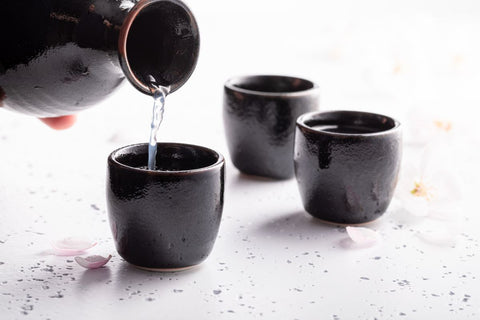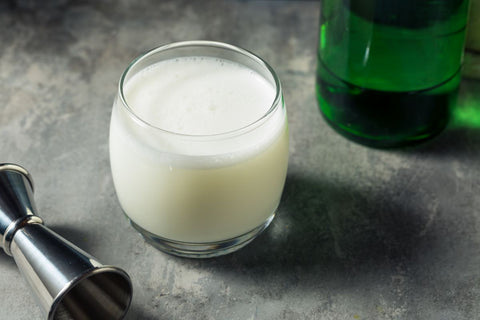What factors affect the taste of sake?
- The ratio of rice polishing
- The spread of Koji spores
- The brewing method
- Pasteurization
- Storage methods
- Temperature
- Serving methods
Sake is Japan’s national drink, and over centuries, the Japanese have invented thousands of ways to make, serve, and drink it. Because of this, you never know what taste you’ll get when you try a specific brand or variety of sake for the first time.
While some will consider that as a part of sake’s unique charm, others may prefer knowing what to expect so they can pair it with dishes or have it with a friend. Well, no worries! The process of making sake can give you at least an idea of how the resulting drink will taste, and we’ve got your inside look at that process right here.
Read on to know what and how certain factors affect the taste of sake.
The Ratio of Rice Polishing

As you might know, sake is made from rice that has been polished. But there’s no hard rule about how much polishing needs to be done. The rice polishing ratio of sake indicates how much of the rice grain’s exterior is milled away, and this factor as well as the actual ingredients that go into the sake determine its grade.
The outer layers of rice grain give sake a rich, full-bodied, and umami-filled flavor. Thus, the higher the polishing ratio, the lighter and cleaner the sake is, and often it’s characterized by fruity and floral profiles as well.
For your reference, daiginjo (including junmai daiginjo) sakes have at least 50% of the rice grain milled away, while for ginjo (including junmai ginjo) sake, the rice polishing ratio is at least 60%. Honjozo has a minimum 70% RPR, while junmai can be quite versatile since it has no set RPR.
For a refreshingly aromatic daiginjo with light character and amazing rich flavor, try the Tatsuriki Daiginjo Blue Dragon. For a lighter-bodied and perfectly balanced sake brewed using spring water from the sacred Mount Hakkai, try the Hakkaisan Tokubetsu Honjozo Sake instead. Both of these delicious yet contrasting sakes are available on our website.
The Spread of Koji Spores
Koji spores are central to sake brewing. They are typically inoculated in the rice, and the method by which the spores spread over and through the rice grains impacts sake taste.
The Japanese have specific terms for how covered the surface of the rice is, from entirely to sparsely, because the degree of coverage also indicates whether or not the koji has seeped into the core. Usually, less coverage means more delicate-tasting sake like ginjo or daiginjo.
The Brewing Method
Traditionally, brewers wait for lactic acid to build up naturally in the mashed rice. However, there is a quicker way wherein brewers add lactic acid to the mash. These two brewing methods create slightly different flavors of sake—generally, if more time and labor are put into making the sake, it is expected to be bolder.
Pasteurization
Most sake goes through two rounds of pasteurization before it gets bottled. However, like most factors on this list, there’s no hard rule to this.
Some brewers may choose to skip one or even both of the pasteurization processes, and since pasteurization kills the bacteria that alter flavor and quality, this results in brighter, livelier, fresher, and more acidic sake with a contrasting shelf life.
Our Amabuki Junmai Ginjo Namasake Sunflower Yeast is unpasteurized, which gives it a refreshing attack. Coupled with its rounded and creamy flavor on the palate and a hint of dryness at the end, it’s perfect for a wide range of cuisines.
Storage Methods

And speaking of shelf life, the way that sake is stored—whether in breweries or stores—also affects its taste. That’s why it’s important to always follow the bottle’s instructions about storage.
As for its storage in breweries, historically, sake was stored and transported in wooden barrels. With more modern technology available these days, only a few breweries still use wooden barrels—not for convenience or for a lack of material, but for the distinct cedar-like flavor it adds to the sake.
Temperature
Another thing that makes sake so special is that it can be served at a wide range of temperatures. And even then, the same sake can taste different depending on the temperature at which it is served. Now that’s versatility!
Chilled sake is more brisk and refreshing, while heated sake may exhibit an enhanced aroma and mellow flavor. To know which temperature is the best for your sake, you have two options: check the label for what the brewery recommends, or try it hot and cold on two separate occasions to determine your preference!
Serving Methods

Finally, the flavor of sake can change slightly depending on what it’s served in. Similar to wine glasses and whiskey tumblers, there are specific drinking vessels for sake that enhance its aroma and even flavor.
Probably the most well-known sake cup is the ochoko, a small ceramic cup with a narrow rim that is paired with the tokkuri, a sake decanter. There is also the slightly larger guinomi, whose wider rim enhances the acidity of the sake.
Most interestingly, there is the masu, a cubic Japanese wood box that imparts its flavor onto the sake inside it. Chilled or room-temp sake can even be served in stemmed glasses (similar to a wine glass), which magnify its aroma!
Why not try the Gekkeikan Traditional Sake, the world’s most popular Junmai-shu, and get a taste of tradition? It’s best served chilled or at room temperature, so you know what that means—no need for the sake cup if you don’t have one; a wine glass will do!
Key Takeaway
Sake is an extremely versatile and flexible drink that’s good for various occasions and matches well with just about any country’s cuisine. Now you know why!
This article discussed the many factors that can influence sake’s flavor, aroma, and character, and if there’s one thing you should take from this article, it’s that there is sure to be a type or brand of sake for you. Once you’ve made your choice, head on over to Ralph’s Wines and Spirits, the top supplier of sake in the Philippines, and make your purchase!



